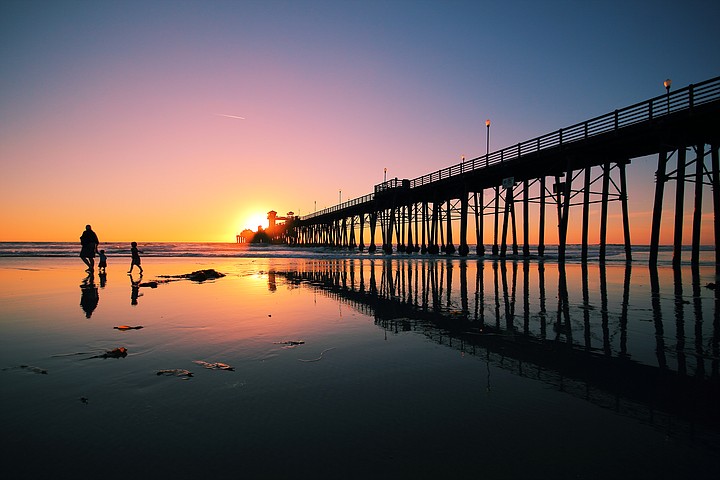 Facebook
Facebook
 X
X
 Instagram
Instagram
 TikTok
TikTok
 Youtube
Youtube

Will We See The Aurora Borealis in San Diego This Year? We don’t often see the famed Northern Lights this far south, but in March 1989, the aurora borealis was visible down in Mexico, and the historic solar storm of May 10 sent light shows as far south as Central California. Ordinarily, solar storms peak near the end of the sun’s 11-year solar cycle; the current one began in late 2019, but based on recent solar activity, it looks like it may be peaking early. June 6 will see the stormy sun spot from May 10 facing earth once again, and June 7th’s New Moon may leave the skies dark enough for a show — if the clouds cooperate. Ideal viewing time will be between 10 pm and 3 am in the northern sky. Best to be somewhere far from the big city lights.

June’s Very Low Tides, associated with the new moon, are for early risers only! Check out the local tidepool life without hordes of other people around. Wednesday, June 5, features a -1.54-foot tide at 3:37 am. Thursday, June 6, brings a -1.67-foot tide at a more reasonable time of 4:22 am. Before work on Friday, perhaps, you can catch the -1.57-foot tide at a relatively tardy 5:07 am.

“June Gloom,” The Blanket Of Clouds pulled over coastal areas for at least the remainder of this month, will often lead to a temperature variant of 10-15 degrees between the coast and inland areas. If it weren’t for the ocean’s 62 degree temperature, the hottest weather along the coast would occur soon after the summer solstice — June 21. Our warmest beach weather typically arrives in August or September, just as ocean water temperatures are peaking.


Will We See The Aurora Borealis in San Diego This Year? We don’t often see the famed Northern Lights this far south, but in March 1989, the aurora borealis was visible down in Mexico, and the historic solar storm of May 10 sent light shows as far south as Central California. Ordinarily, solar storms peak near the end of the sun’s 11-year solar cycle; the current one began in late 2019, but based on recent solar activity, it looks like it may be peaking early. June 6 will see the stormy sun spot from May 10 facing earth once again, and June 7th’s New Moon may leave the skies dark enough for a show — if the clouds cooperate. Ideal viewing time will be between 10 pm and 3 am in the northern sky. Best to be somewhere far from the big city lights.

June’s Very Low Tides, associated with the new moon, are for early risers only! Check out the local tidepool life without hordes of other people around. Wednesday, June 5, features a -1.54-foot tide at 3:37 am. Thursday, June 6, brings a -1.67-foot tide at a more reasonable time of 4:22 am. Before work on Friday, perhaps, you can catch the -1.57-foot tide at a relatively tardy 5:07 am.

“June Gloom,” The Blanket Of Clouds pulled over coastal areas for at least the remainder of this month, will often lead to a temperature variant of 10-15 degrees between the coast and inland areas. If it weren’t for the ocean’s 62 degree temperature, the hottest weather along the coast would occur soon after the summer solstice — June 21. Our warmest beach weather typically arrives in August or September, just as ocean water temperatures are peaking.
Comments